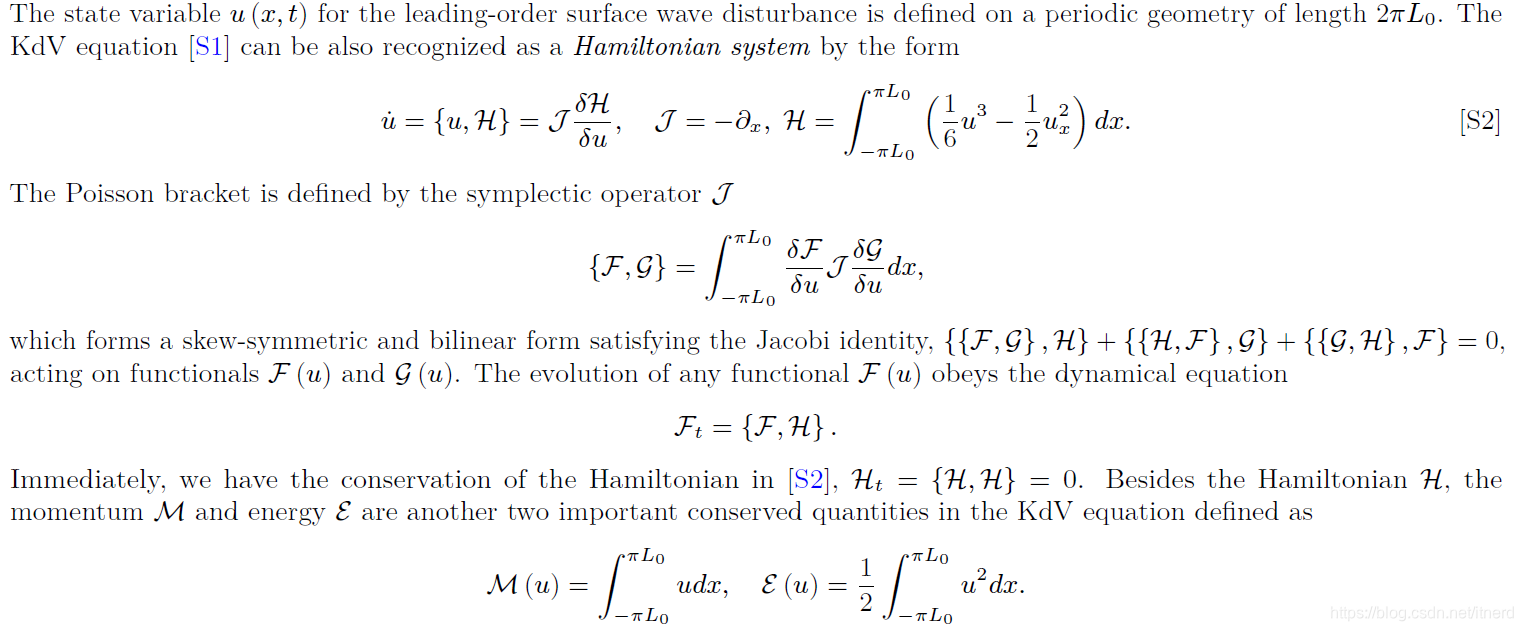论文地址
PNAS: https://www.pnas.org/content/117/1/52

BibTex
@article {Qi52,
author = {Qi, Di and Majda, Andrew J.},
title = {Using machine learning to predict extreme events in complex systems},
volume = {117},
number = {1},
pages = {52--59},
year = {2020},
doi = {10.1073/pnas.1917285117},
publisher = {National Academy of Sciences},
abstract = {Understanding and predicting extreme events as well as the related anomalous statistics is a grand challenge in complex natural systems. Deep convolutional neural networks provide a useful tool to learn the essential model dynamics directly from data. A deep learning strategy is proposed to predict the extreme events that appear in turbulent dynamical systems. A truncated KdV model displaying distinctive statistics from near-Gaussian to highly skewed distributions is used as the test model. The neural network is trained using data only from the near-Gaussian regime without the occurrence of large extreme values. The optimized network demonstrates uniformly high skill in successfully capturing the solution structures in a wide variety of statistical regimes, including the highly skewed extreme events.Extreme events and the related anomalous statistics are ubiquitously observed in many natural systems, and the development of efficient methods to understand and accurately predict such representative features remains a grand challenge. Here, we investigate the skill of deep learning strategies in the prediction of extreme events in complex turbulent dynamical systems. Deep neural networks have been successfully applied to many imaging processing problems involving big data, and have recently shown potential for the study of dynamical systems. We propose to use a densely connected mixed-scale network model to capture the extreme events appearing in a truncated Korteweg{\textendash}de Vries (tKdV) statistical framework, which creates anomalous skewed distributions consistent with recent laboratory experiments for shallow water waves across an abrupt depth change, where a remarkable statistical phase transition is generated by varying the inverse temperature parameter in the corresponding Gibbs invariant measures. The neural network is trained using data without knowing the explicit model dynamics, and the training data are only drawn from the near-Gaussian regime of the tKdV model solutions without the occurrence of large extreme values. A relative entropy loss function, together with empirical partition functions, is proposed for measuring the accuracy of the network output where the dominant structures in the turbulent field are emphasized. The optimized network is shown to gain uniformly high skill in accurately predicting the solutions in a wide variety of statistical regimes, including highly skewed extreme events. The technique is promising to be further applied to other complicated high-dimensional systems.},
issn = {0027-8424},
URL = {https://www.pnas.org/content/117/1/52},
eprint = {https://www.pnas.org/content/117/1/52.full.pdf},
journal = {Proceedings of the National Academy of Sciences}
}
主要内容
KdV 方程
KdV 方程的标准形式:
∂
u
∂
t
+
u
∂
u
∂
x
+
∂
3
u
∂
x
3
=
0
,
x
∈
[
−
π
L
0
,
π
L
0
]
.
\frac{\partial u}{\partial t} + u\frac{\partial u}{\partial x} + \frac{\partial^3 u}{\partial x^3} = 0, \quad x \in [-\pi L_0, \pi L_0 ].
∂t∂u+u∂x∂u+∂x3∂3u=0,x∈[−πL0,πL0].
KdV 方程可以表示成哈密顿系统:

哈密顿量是保守量,即不随时间改变:
H
t
=
0
H_t = 0
Ht=0,除了它之外,还有动量
M
M
M 和能量
E
E
E 也是保守量.
通常会将KdV方程正则化(无量纲化),使系统的动量为 0, 能量为 1.
将方程无量纲化的好处是对任意尺度的系统都可以统一分析。

无量纲的KdV方程:

tKdV 方程
截断 (truncated) KdV 方程指的是在频域上截断, 因为数值计算时把空间划分成有限个网格点,波长太短的信号是没法表示的

无量纲化的 tKdV 方程具有如下形式的哈密顿保守量:

截断系统满足刘维尔性质:平衡态统计力学由保守量决定.
方程解的稳态分布



数据集的输入输出样本
把2维的时空数据视为图片

MS-D net



MS-D net 可用于图片分割

训练策略


结果


























 5484
5484











 被折叠的 条评论
为什么被折叠?
被折叠的 条评论
为什么被折叠?








